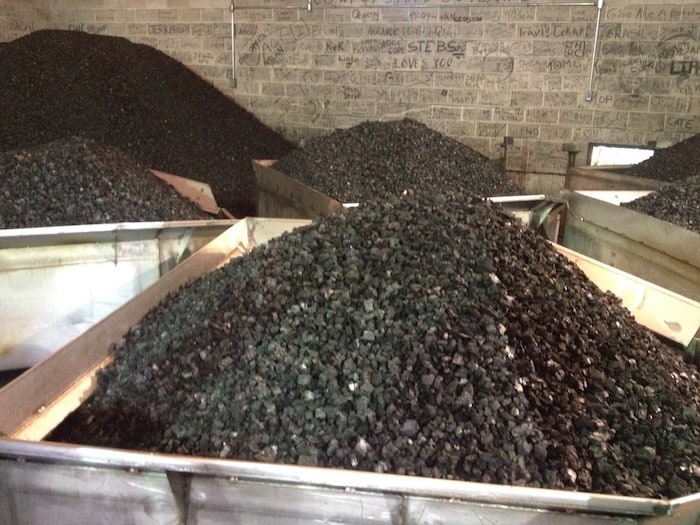New research from the University of Tennessee Institute of Agriculture showed insight into the coal filtration process of making Tennessee Whiskey, finding a way for distillers to minimize unwanted odor profiles. Assistant Professor John P. Munafo Jr. and his graduate student Trenton Kerley published their findings in the Journal of Agriculture and Food Chemistry, making it the latest research published on the subject in more than a century.
The study analyzed changes in flavor chemistry during charcoal filtration — a common step in most distilled beverage production, such as vodka or rum, that is required for a bottle to be labeled “Tennessee Whiskey.” They measured 31 whiskey odorants through stable isotope dilution assay that all showed a decrease in concentration after the Lincoln County Process (LCP) — to varying degrees. While LCP removes certain odorants, the process didn’t increase or add any new ones.
“We want to provide the analytical tools needed to help enable distillers to have more control of their processes and make more consistent and flavorful whiskey,” said Munafo in a prepared statement . “We want to help them to take out some of the guesswork involved in whiskey production.”

The process is intentionally mysterious as the actual LCP differs somewhat among distillers and is considered a trade secret. There are no regulations on how the process is performed, it’s just required that the manufacturer pass the distillate over charcoal. The number of charcoals or for how long is up to the distillers.
In the LCP process, just distilled whiskey passes through a bed of charcoal, usually made from burnt sugar maple, before barreling. This process is widely believed to create a smoother finish, though no scientific research backs that claim, and it is possible it could impact the flavor profile of the whiskey positively or negatively. Distillers adjust parameters empirically throughout the production process, relying on professional tasters to sample products.
“By gaining a fundamental understanding of the changes in flavor chemistry occurring during whiskey production, our team could advise distillers about exactly what changes are needed to make their process produce their desired flavor goals. We want to give distillers levers to pull, so they are not randomly or blindly attempting to get the precise flavor they want,” Munafo said.
Munafo analyzed samples from the Sugarlands Distilling Company in Gatlinburg for their research, noting that LCP treatment generally decreased malty, rancid, fatty, and roasted aromas, and of the 49 odorants — which cause smell sensations — that were identified in the samples, nine were never-before-reported in scientific whiskey literature.
The researchers found two odorants with significantly low odor thresholds: the DMPF whiskey odorant, which is typically found in cocoa, and MND, which has a pleasant dried hay-like aroma. This means the smells can be detected at very low levels by people, but are challenging to report with scientific instruments.
It is believed the knowledge gained from this study can “be used to optimize Tennessee whiskey production. For instance, the process can be optimized for the removal of undesirable aromas, while maintaining higher levels of desirable aromas, thus ‘tailoring’ the flavor profile of the finished whiskey.”
New studies are now underway to characterize both the flavor chemistry of different types of whiskey and their production processes. Even with the aid of science, Munafo said, “whiskey making will ‘still’ remain an impressive art form.”







